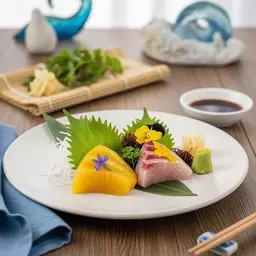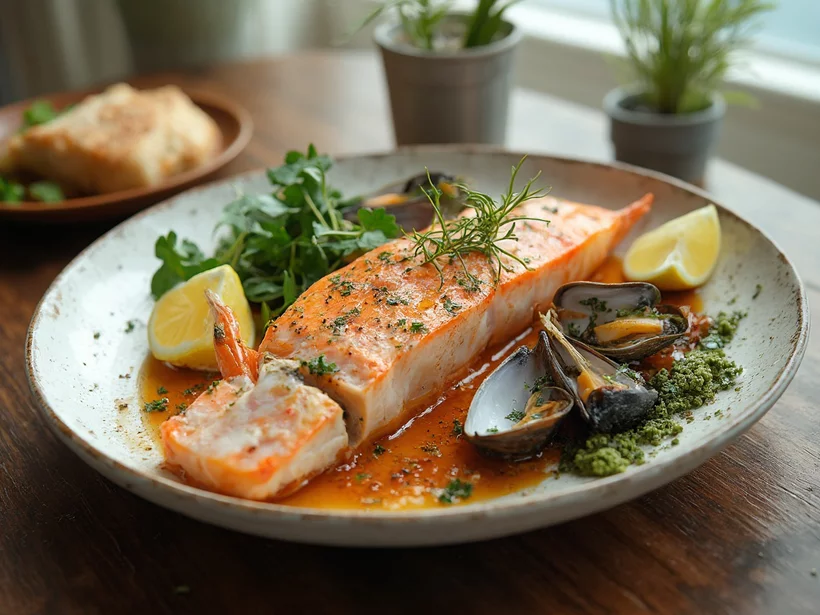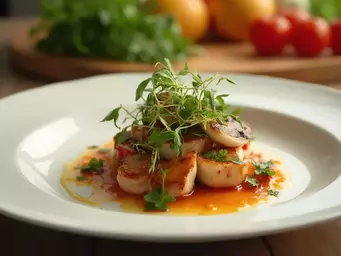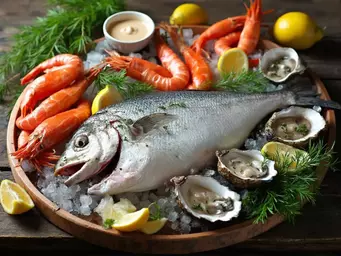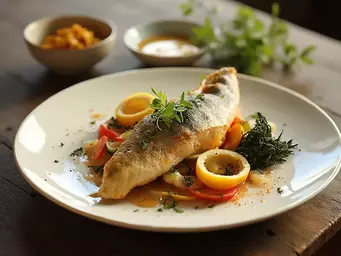Greek Cuisine's Influence on Australia
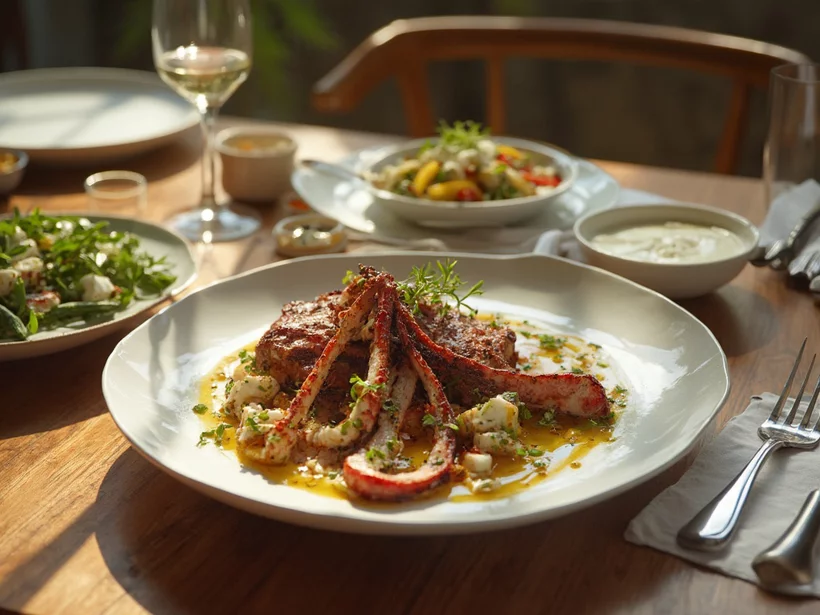
Have you ever considered how a single cuisine can weave itself into the fabric of a nation's identity? Greek food in Australia is a prime example of this cultural fusion, reflecting a rich history of immigration and culinary evolution.
What You Will Learn
- Greek cuisine's journey in Australia began with immigrant cafes in the early 20th century.
- Traditional Greek dishes like moussaka and souvlaki have adapted to local palates over time.
- Olive oil plays a crucial role in Greek cooking and is embraced in modern Australian recipes.
- Emerging trends include plant-based Greek cuisine and farm-to-table practices in Australian dining.
- Fusion dishes, such as souvlaki tacos, highlight the creative intersection of Greek and Australian culinary traditions.
The Evolution of Greek Cuisine in Australia: From Tradition to Innovation
This visual explores the journey of Greek cuisine in Australia, highlighting key traditional dishes, their modern adaptations, and the emerging trends shaping its future.
The Influence of Greek Cuisine on Australia's Culinary Landscape
As a passionate food enthusiast, I can't help but be fascinated by how Greek cuisine has woven itself into the rich tapestry of Australia's culinary landscape. The flavors, traditions, and stories of Greek food have found their way into the hearts and kitchens of many Australians, creating a beautiful blend of cultures. Let's explore the deep roots of Greek food in Australia and see how it has evolved into what we cherish today.
When we think about the beginnings of Greek food here, we often picture the bustling immigrant cafes from the early 20th century. These humble establishments served as the first taste of Greek culture for many Australians, introducing dishes that would become beloved staples. Over time, these cafes evolved into vibrant Greek restaurants, offering a warm atmosphere filled with laughter, music, and delicious food. The Australian food culture has significantly benefited from this rich culinary exchange.
Understanding the Historical Roots of Greek Cuisine in Australia
The journey of Greek cuisine in Australia began with waves of immigrants seeking new opportunities. The 1950s saw a significant rise in Greek-owned cafes, where traditional dishes like moussaka and souvlaki were served to curious diners. These establishments not only provided a taste of home for Greek immigrants but also educated Australians about the rich flavors and unique cooking techniques of Greek food.
- Early immigrant cafes introduced simple Greek dishes.
- Greek restaurants became cultural hubs for community gatherings.
- Traditional recipes passed down through generations shaped modern menus.
Today, we see how those early cafes have blossomed into a vibrant restaurant scene across the country. Each dish tells a story, connecting us to history while inviting us to experience the present through food.
The Journey of Greek Dishes: From Traditional to Modern
As Greek cuisine gained popularity, many traditional dishes adapted to suit local tastes. Take, for example, the beloved moussaka. This comforting dish of eggplant, minced meat, and béchamel sauce has become a household favorite in Australia. Similarly, souvlaki has transformed from a traditional street food into a gourmet experience, often served with local Australian produce and innovative flavor combinations.
- Moussaka: A classic baked dish that showcases layers of flavors.
- Souvlaki: Tender skewers that highlight the freshness of local ingredients.
- Spanakopita: Savory pastries filled with spinach and feta, perfect for sharing.
The evolution of these dishes illustrates the beauty of cultural exchange, and it’s exciting to see how chefs creatively reinterpret traditional recipes while honoring their origins.
The Role of Olive Oil in Greek Cooking and Australian Adaptations
No discussion of Greek cuisine would be complete without mentioning olive oil. This liquid gold is a cornerstone of Greek cooking, adored for its rich flavor and health benefits. In Australia, olive oil has found its way into both traditional Greek dishes and modern Australian recipes, enhancing the flavors of everything from salads to grilled meats. This widespread acceptance also paves the way for a promising market for Greek food and beverage products.
- Olive oil is essential in traditional Greek dressings and marinades.
- Locally produced olive oils bring a unique twist to classic recipes.
- Health benefits associated with olive oil align with modern Australian wellness trends.
As I explore the vibrant markets, I’m often captivated by the array of local olive oils available, each telling its own story of the land and the people. This connection to local produce enriches our dining experience, making every meal a celebration of our culinary heritage.
We Want to Hear From You!
How has Greek cuisine influenced your dining experiences in Australia? Share your thoughts below:
Frequently Asked Questions about Greek Cuisine in Australia
- Q: How did Greek cuisine first arrive in Australia?
- A: Greek cuisine was introduced to Australia by immigrants who established cafes in the early 20th century, serving traditional dishes and creating cultural hubs for the Greek community.
- Q: What are some traditional Greek dishes that have become popular in Australia?
- A: Popular traditional Greek dishes in Australia include moussaka, souvlaki, and spanakopita, all of which have seen adaptations to local tastes and ingredients.
- Q: How has olive oil impacted Australian cooking through Greek cuisine?
- A: Olive oil, a cornerstone of Greek cooking, has been widely adopted in Australian recipes for its rich flavor and health benefits, aligning with modern Australian wellness trends.
- Q: What are the emerging trends in Greek dining in Australia?
- A: Emerging trends include plant-based Greek cuisine, farm-to-table practices emphasizing sustainable local sourcing, and elevated casual dining experiences.
- Q: Can you give examples of cross-cultural fusion dishes involving Greek and Australian food?
- A: Examples include souvlaki tacos, Greek-inspired barbecues, and fusion desserts like baklava pancakes or citrus pavlovas, blending Greek flavors with Australian formats and ingredients.
Engaging with Greek Cuisine: What's Next for Australian Diners?
As the culinary landscape in Australia continues to evolve, Greek cuisine remains a vibrant and integral part of this change. I often find myself reflecting on the delightful experiences I’ve had at local Greek restaurants, where traditional flavors harmoniously blend with contemporary practices. There’s an exciting future ahead for Greek dining in Australia, with emerging trends and innovations set to reshape our approach to this beloved cuisine!
The Future of Greek Dining in Australia: Emerging Trends and Innovations
Looking towards the future, we can anticipate several trends that will further integrate Greek flavors into the Australian culinary scene. Australian diners are becoming increasingly adventurous, seeking out authentic and innovative experiences. The latest consumer insights indicate a growing demand for diverse and quality food options. Here are some trends I expect to see:
- Plant-Based Greek Cuisine: With a growing interest in vegetarian and vegan options, traditional Greek dishes are being reimagined using local produce and plant-based ingredients.
- Farm-to-Table Practices: Emphasizing sustainable sourcing, chefs are likely to prioritize local and seasonal produce, showcasing the freshness that Australian farms have to offer.
- Elevated Casual Dining: The rise of more relaxed dining experiences will allow for Greek food to be enjoyed in a less formal setting, encouraging sharing plates and community engagement.
These trends indicate a shift towards a more inclusive and health-conscious Greek dining experience, making it even more accessible to a wider audience!
Cross-Cultural Cuisine: The Intersection of Greek and Australian Food Trends
The fusion of Greek and Australian culinary practices is another exciting trend that shapes the future of dining here. I’ve seen firsthand how chefs creatively merge traditional Greek recipes with Australian ingredients, resulting in unique dishes that celebrate both cultures. Here are some examples of this delightful cross-pollination:
- Souvlaki Tacos: Combining the handheld convenience of tacos with the classic flavors of souvlaki, this dish is a favorite among adventurous eaters.
- Greek-Inspired Barbecues: Australians love their BBQs, and incorporating Greek marinades and sides adds a Mediterranean flair to outdoor gatherings.
- Fusion Desserts: Think baklava pancakes or citrus-infused pavlovas—these desserts beautifully blend Greek and Australian styles for a delightful sweet treat!
As these culinary intersections continue to expand, diners can look forward to exciting and diverse dining experiences that reflect the richness of our cultural tapestry!
Recap of Key Points
Here is a quick recap of the important points discussed in the article:
- Greek cuisine in Australia has evolved from early immigrant cafes to vibrant restaurants, introducing diverse dishes to local palates.
- Traditional dishes like moussaka and souvlaki have been adapted to incorporate local ingredients and modern cooking techniques.
- The role of olive oil in Greek cooking is significant, enhancing flavors and aligning with contemporary Australian wellness trends.
- Emerging trends include plant-based Greek cuisine and farm-to-table practices, reflecting a shift towards sustainable dining experiences.
- Cross-cultural fusion is creating exciting new dishes, such as souvlaki tacos and Greek-inspired barbecues, showcasing the blend of Greek and Australian culinary traditions.


